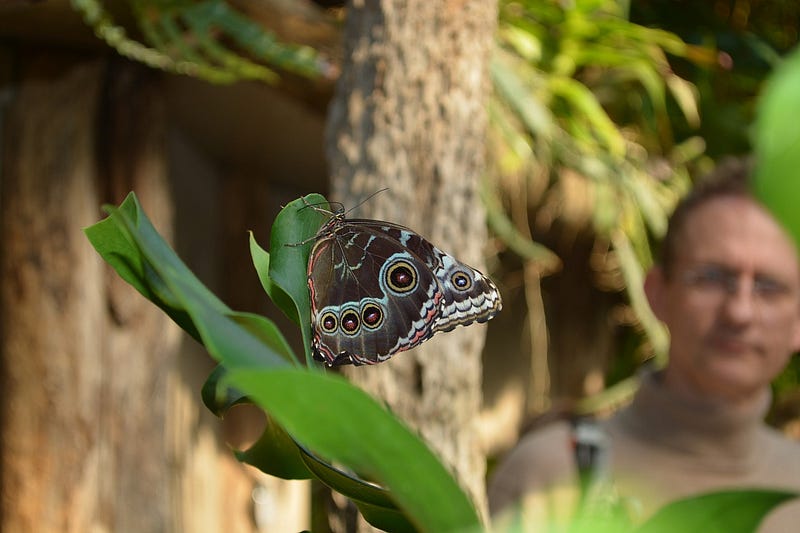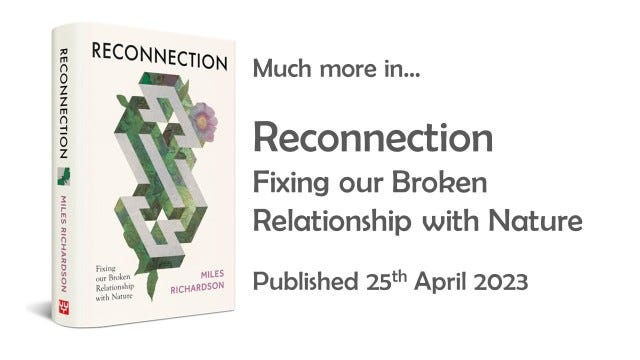The Impact of Citizen Science on Wellbeing and Nature Connection
Written on
Chapter 1: Understanding Citizen Science
Various methods of connecting with nature resonate differently with individuals, and our recent investigation into enhancing nature connectedness indicates that lasting benefits can stem from diverse forms of interaction.

Counting Butterflies and Finding Joy
Our latest research, published in People and Nature, sheds light on a significant aspect of engaging with nature—Citizen Science. This approach not only attracts many participants but also encourages regular observation and interaction with the natural world, a crucial outcome of our broader studies.
As many of you may be aware, enhancing our relationship with nature is vital as it is a key factor in the ongoing environmental crises. Additionally, it offers substantial wellbeing advantages. We embarked on a study aimed at assessing the influence of nature-centered activities on individuals' connection to nature and their overall wellbeing. This initiative, named "Nature Up Close and Personal: A Wellbeing Experiment," involved a week-long randomized controlled trial with 500 participants who completed surveys before and after their engagement, covering various outcome measures.
Participants were divided randomly into six groups. Those in the experimental groups participated in a ten-minute activity five times over eight days. The activities included two distinct citizen science tasks (a pollinator survey or butterfly observation), the "3 Good Things in Nature" (3GTiN) activity focused on nature appreciation, or a combination of both citizen science and 3GTiN.
After analyzing the collected data, we discovered that involvement in citizen science, 3GTiN, and the combination of both significantly enhanced nature connectedness, happiness, the sense of living a meaningful life, and life satisfaction. While 3GTiN showed slightly greater improvements across all measures, the differences were not statistically significant. This builds upon prior research highlighting the wellbeing benefits of connecting with nature, while also offering new insights into citizen science.
The study also investigated how these activities engaged the pathways to nature connectedness. When compared to 3GTiN, participants involved in citizen science reported lower scores on sensory engagement and feelings of calm or joy but higher scores regarding their perceived impact. The combined activity effectively engaged pathways to nature connectedness, at least as strongly as the highest-scoring individual activity.
It's intriguing to note that while citizen science activities were linked to conservation efforts and participants felt they made a difference, it was primarily the 3GTiN activity that yielded significant positive effects on pro-nature conservation behaviors. This provides initial evidence of a causal relationship between enhanced nature connectedness and pro-environmental actions, alongside the established link between nature connection and general environmental behaviors. This finding aligns with recent research indicating that emotions play a more crucial role than facts in influencing behavior—3GTiN encourages individuals to acknowledge positive emotions associated with nature.
The findings illustrate that nature-based citizen science is more than merely a method for collecting environmental data; it also enhances participants' wellbeing and connection to nature. Moreover, when paired with the 3 Good Things in Nature activity, it fosters pro-nature conservation behaviors. This expands the range of activities already identified as enhancing human-nature interactions. Furthermore, citizen science could be made even more impactful by deliberately incorporating emotional and sensory engagement aspects into its framework, similar to our recent "joy watching" project, which rated the joy of observing birds alongside counting species, leading to greater benefits.
On a broader societal level, this research can inform public policy by advocating a 'one health' approach to nature engagement—monitor and enjoy! This framework can unify human and environmental wellbeing, fostering biodiversity and empowering communities to recognize and monitor everyday biodiversity, while acknowledging the interdependence of human and nature's wellbeing.


Chapter 2: Videos on Citizen Science
This enlightening video titled "Citizen science: One person can make a global difference | Kate Foral | TEDxUGASalon" explores how individual contributions to citizen science can lead to significant global impacts. It emphasizes the role of citizens in monitoring environmental changes and highlights the importance of personal involvement in conservation efforts.
In the video "What is Citizen Science? - YouTube," viewers gain a comprehensive understanding of citizen science, its principles, and its various applications in environmental research. This video serves as an excellent introduction for those looking to engage with and contribute to citizen science initiatives.